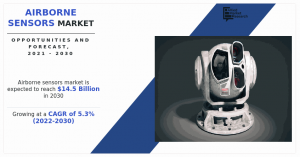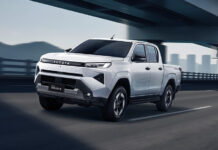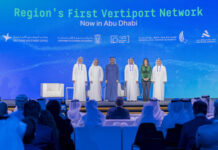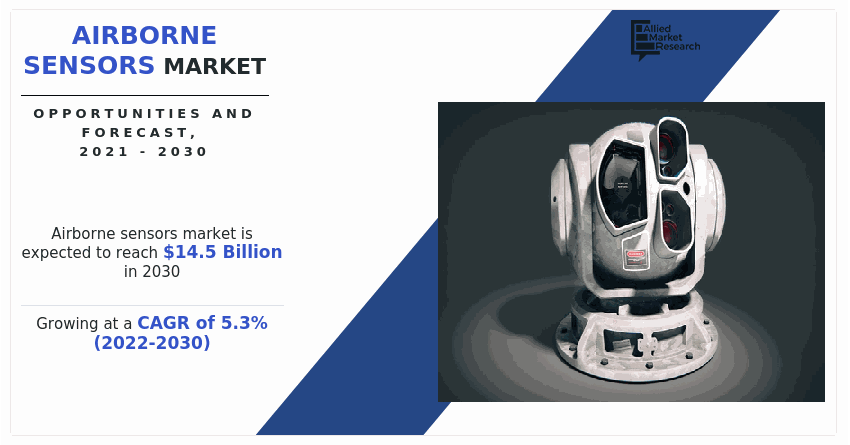
Airborne Sensors Market
An airborne sensor is a type of operator that can gather the information from airborne platforms; it can be manned or unmanned.
PORTLAND, OR, UNITED STATES, March 15, 2023 /EINPresswire.com/ — Drivers and Opportunities
Increase in international terrorism threats and surge in defense & military budgets to strengthen national security in developing and developed countries drive the growth of the global airborne sensors market. In addition, product development & innovations, technological advancements, and rise in R&D investments present new opportunities in the coming years.
Download Report (228 Pages PDF with Insights, Charts, Tables, Figures) at https://www.alliedmarketresearch.com/request-sample/16877
An airborne sensor is a type of operator that can gather the information from airborne platforms; it can be manned or unmanned. It is mostly used for the missions such as military, public safety, academic and commercial remote sensing purposes. In defense sector, airborne sensors support surveillance, intelligence, and reconnaissance collection operations. Also, it can be used in Combat Search & Rescue (CSAR) and tactical combat operations. Moreover, signal intelligence plays vital role in government and defence authorities. Moreover, combination of signal intelligence and airborne sensor helps in detecting, identifying, locating, and tracking the full-time spectrum awareness and intelligence to national as well as a tactical user.
According to a new report published by Allied Market Research, titled, “Airborne Sensors Market,” The airborne sensors market was valued at $9.2 billion in 2021, and is estimated to reach $14.5 billion by 2030, growing at a CAGR of 5.3% from 2022 to 2030.
Covid-19 Scenario
Owing to lockdown restrictions and ban on import-export activities during the pandemic, production, R&D activities, and investments were stopped. Moreover, supply chain was disrupted. These factors led to impact on the airborne sensors industry revenue.
Many countries reduced their budgets for military and defense equipment to shift resources toward tackling the pandemic. Moreover, the economic uncertainty led to reduction in budgets for the defense sector. This, in turn, impacted the airborne sensors market growth negatively.
The defence aircraft segment to maintain its lead position throughout the forecast period
Based on application, the defence aircraft segment contributed the highest market share in 2021, accounting for more than two-fifths of the global airborne sensors market, and is expected to maintain its lead position throughout the forecast period. Moreover, this segment is expected to witness the fastest CAGR of 5.7% from 2022 to 2030. This is due to increase in R&D activities and rise in budgets by defense and military organizations. The report also analyzes the segments including commercial aircraft and others.
Interested to Procure the Data with Actionable Strategy & Insights? Inquire here at https://www.alliedmarketresearch.com/purchase-enquiry/16877
The non-scanning segment to maintain its lead position throughout the forecast period
Based on type, the non-scanning segment contributed the highest share in 2021, accounting for more than three-fifths of the global airborne sensors market, and is expected to maintain its lead position throughout the forecast period. This is due to technological advancements and the availability of different classes of airborne sensors such as gliders, seaplanes, and kites. However, the scanning segment is projected to witness the largest CAGR of 5.5% from 2022 to 2030. This is due to benefits such as high resolution imagery, its suitability in rescue operations, and the need of small area for operation.
Leading Market Players
Hexagon
Thales Group
Raytheon Technologies
Lockheed Martin Corporation
information systems laboratories
teledyne optech
General Dynamics Corporation
Honeywell International Inc.
ITT Inc.
AVT Airborne Sensing GmbH
North America to maintain its dominance in terms of revenue by 2030
Based on region, North America accounted for the highest market share in terms of revenue in 2021, holding more than one-fourth of the global airborne sensors market, and is expected to maintain its dominance in terms of revenue by 2030. This is due to rise in public spending on imaging software and integration of smart sensing technologies by leading tech companies such as Uber and Tesla for development of self-driving cars. However, Asia-Pacific is estimated to register the fastest CAGR of 5.9% during the forecast period, owing to surge in demand for improved technologies in radars, electro-optics/infrared (EO/IR) sensors, and others. In addition, the development of next-generation aircrafts and increase in defense contracts supplement the market growth.
Procure Research Report at: https://www.alliedmarketresearch.com/airborne-sensors-market/purchase-options
Allied Market Research
Allied Market Research
+1 800-792-5285
email us here
Visit us on social media:
Facebook
Twitter
LinkedIn
![]()




































